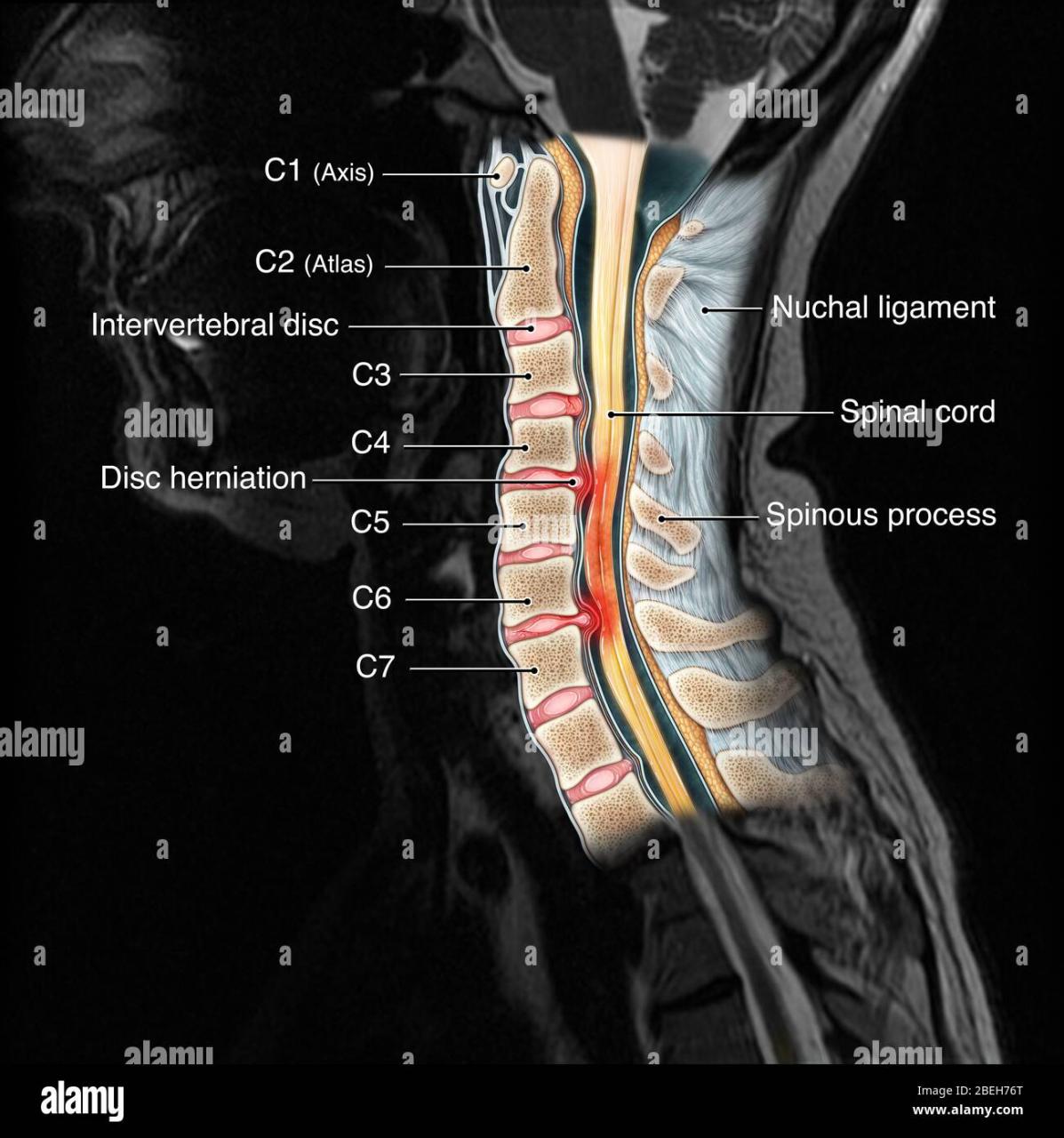Cervical spine injuries result from deformation to the cervical spinal column, potentially causing damage to the spinal cord. Injury to the C5 vertebrae and higher can be fatal, as it may inhibit ventilation controlled by the central nervous system. The most common spinal cord injuries in the lower cervical spine occur due to birth injury, disease, motor vehicle accidents, falls, sports accidents, and violence. Some additional causes of lower cervical spine injuries include lack of blood flow, compression from a blood clot or fractured bones, and bending or buckling of ligaments. Injury at nearly any level of the spinal cord can result in some type of respiratory impairment, with expected dysfunction varying by injury level: minimal dysfunction with weakened cough for L1 or lower level injuries, and weakened intercostal and abdominal muscles resulting in a weak cough for T5-T12 spinal cord injuries (SCI).
Symptoms of cervical spondylosis commonly include neck pain and/or stiffness. In cases where spondylotic changes to the spine put pressure on adjacent nerves, patients may experience pain, numbness, or tingling that extends down the arm, with or without symptoms in the neck itself.
Clinical signs of cervical spinal cord injury include areflexia, diaphragmatic breathing, forearm flexion, response to pain above the clavicle, hypotension and bradycardia (indicative of sympathetic nervous system paralysis), and priapism (indicative of parasympathetic paralysis).
For subaxial cervical spine injuries, the Subaxial Cervical Spine Injury Classification (SLIC) is utilized, considering facet joint injuries, spinal fractures classified by mechanism, nomenclature for intervertebral disc herniation, and the Myerding Classification of Spondylolisthesis.
Cervical radiculopathy is another condition related to the cervical spine, and non-operative treatments as well as cervical epidural steroid injections are common management strategies. Around 10% of adults experience severe neck pain annually, with multiple potential causes including inflammation of muscles, ligaments, joints, or nerves.
In pediatric patients, cervical spine injuries occur in 1-2% of trauma cases, with a 16% mortality rate, underscoring the importance of immediate medical consultation and caution in moving a child suspected of having a neck injury.

For further reading and resources on cervical spine injuries, consider visiting the following pages:
Cervical Spine Injury Guidelines
Lower Cervical Spine Injuries (C3-C7) Information
Guidelines for Respiratory Management in Spinal Cord Injury
Overview of Spondylosis
Lecture on Spine and Spinal Cord Injuries
Guideline for Managing Penetrating Neck Trauma
Subaxial Cervical Spine Injury Classification (SLIC) Reference
Cervical Radiculopathy: Non-operative Treatments and Epidural Information
C1 Atlas Spine Injury Information


